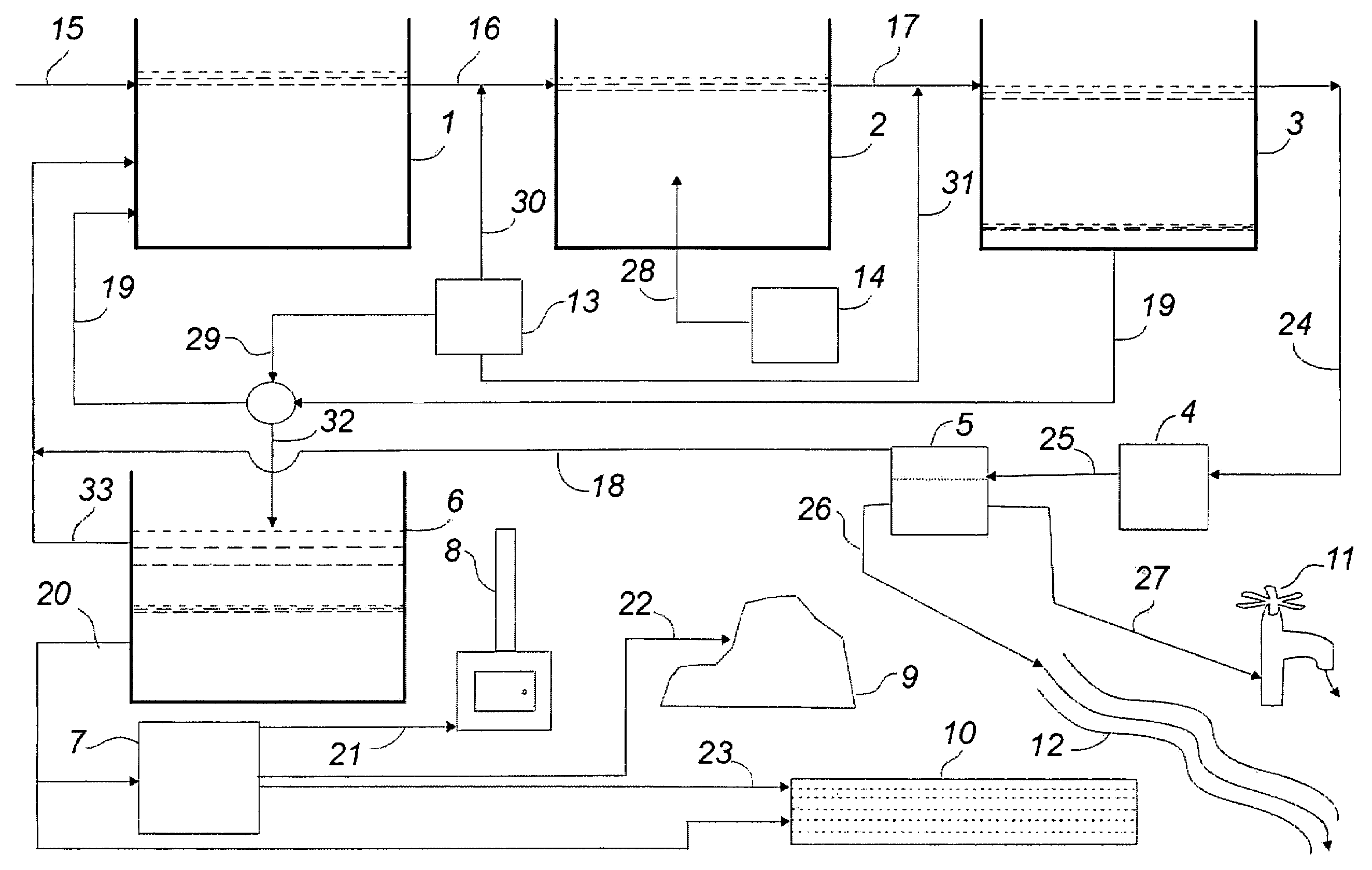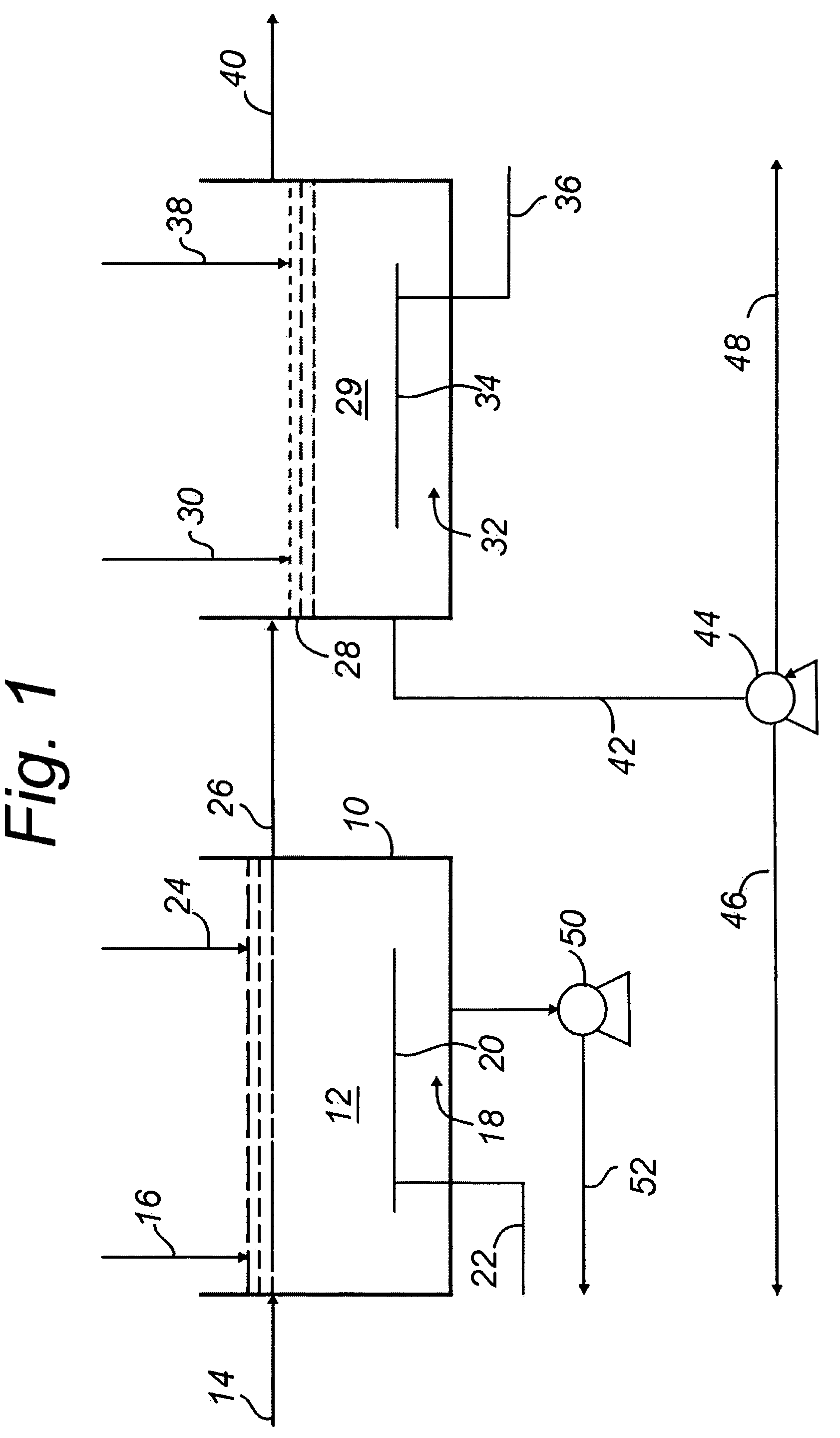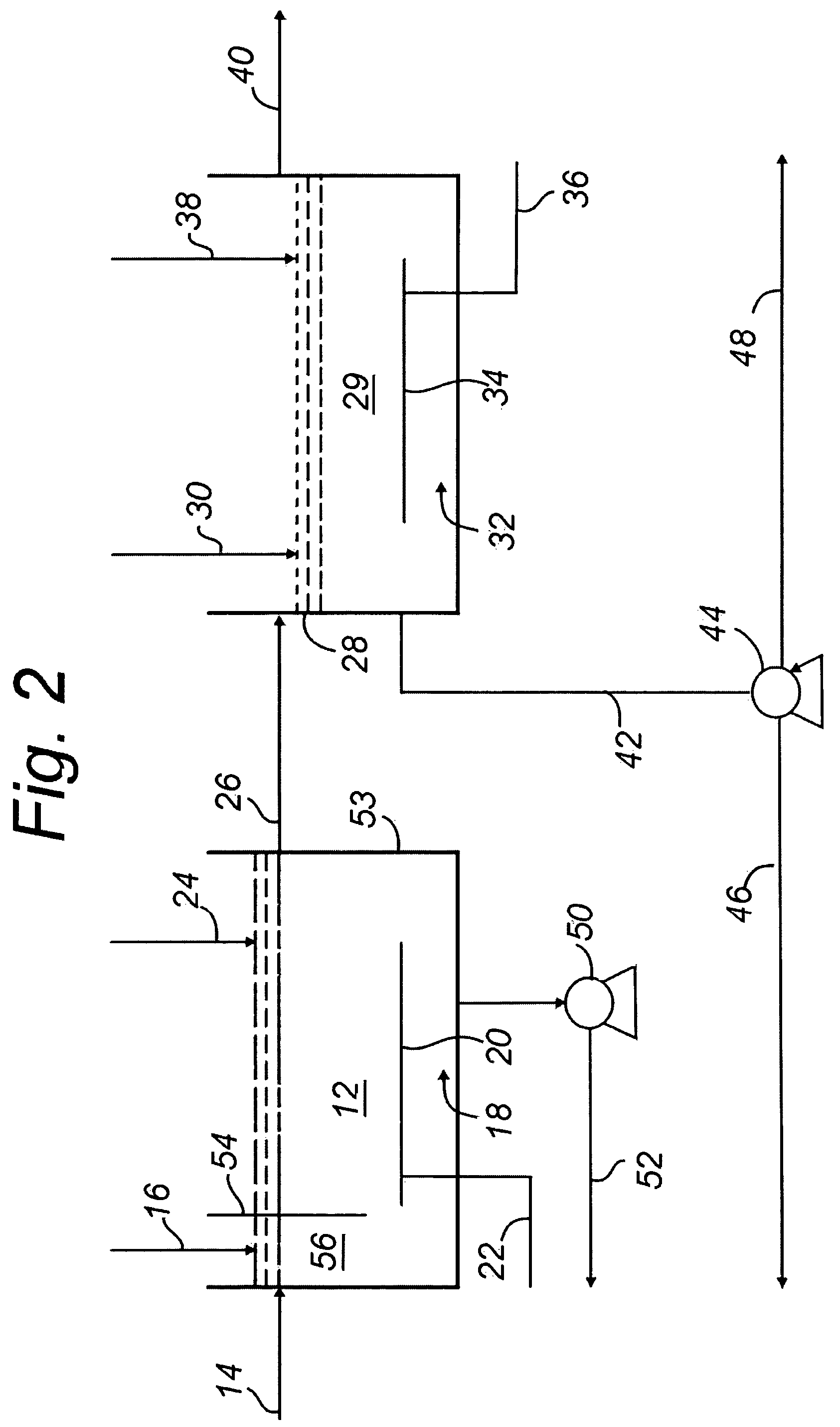Methods for treatment of wastewater with powdered natural lignocellulosic material
a technology of lignocellulosic material and wastewater treatment, applied in the direction of biological water/sewage treatment, sustainable biological treatment, multi-stage water/sewage treatment, etc., can solve the problems of large contaminants present in industrial wastewater, slow application of this process to the treatment of industrial and cafo wastewater, and inability to meet the requirements of bod.sub.5 contaminants, etc., to achieve the effect of reducing sludge production, reducing sludge production, and efficien
- Summary
- Abstract
- Description
- Claims
- Application Information
AI Technical Summary
Benefits of technology
Problems solved by technology
Method used
Image
Examples
first preferred embodiment
[0053]Referring to FIG. 1, a wastewater containing organic and adsorbable pollutants is introduced into a primary treatment zone or tank 10 including an aeration and settling zone 12.
[0054]If the wastewater contains an excessive amount of oils and / or solids, it can be pretreated and clarified by settling, decantation or filtration to reduce the solids content prior to treatment in the primary treatment zone 10. Any such pretreatment will preferably include use of PNLM and / or PKC to enhance removal of solids and / or oils in the manner described above. The clarified or unclarified wastewater is introduced via a conduit 14 into the aeration and settling zone 12 wherein it is aerated with a pressurized oxygen containing gas, such as air, in the presence of sufficient amounts of a powdered PNLM and / or PKC adsorbent and biologically active solids to reduce the BOD, COD, TOC and adsorbable pollutants to desired levels.
[0055]The PNLM and / or PKC adsorbent must be finely divided and readily di...
second preferred embodiment
[0067]In the embodiment illustrated in FIG. 2, the contact tank 28 is arranged and operates in the same manner as described above. Accordingly, components common with those illustrated in FIG. 1 are designated with the same reference numerals. In this embodiment wastewater flows continuously into the primary treatment zone 53; however, the aeration and settling zone 12 is operated in a batchwise manner. The operating conditions for the aeration and settling zone 12 can be substantially the same as those described above. Components of the primary treatment zone 53 common with those illustrated in FIG. 1 are designated with the same reference numerals. The primary treatment zone 53 includes a downwardly extending baffle 54 defining a turbulent inlet zone 56 which is substantially isolated from and is in continuous fluid communication with the aeration and settling zone 12. The wastewater flowing from the inlet zone 56 into the aeration and settling zone 12 is mixed therein by aeration...
third preferred embodiment
[0071]Referring to FIG. 3, a screened raw wastewater containing organic and adsorbable pollutants is introduced by conduit 15 into a mixing tank 1 which incorporates a mixing device. The wastewater is mixed with return activated sludge solids (RASS) removed continuously from the bottom of clarifier 2. Oxygen concentration is lowered in the mixing process to between 0.05 and 0.4 mg / l. Detention time can range between 1 and 12 hours. If the wastewater contains an excessive amount of solids, it can be pretreated and / or clarified by settling, decantation or filtration to reduce the solids content prior to introduction to the anoxic mixing tank 1.
[0072]Wastewater is removed continuously from the anoxic mixing basin 1 via a conduit 16 into the aeration zone 2 wherein it is aerated with a pressurized oxygen containing gas (such as air) (from 14 via conduit 28), surface rotating aerators or by any other suitable means 14 (via conduit 28) in the presence of sufficient amounts of a powdered a...
PUM
| Property | Measurement | Unit |
|---|---|---|
| surface area | aaaaa | aaaaa |
| surface area | aaaaa | aaaaa |
| hydraulic residence time | aaaaa | aaaaa |
Abstract
Description
Claims
Application Information
 Login to View More
Login to View More - R&D
- Intellectual Property
- Life Sciences
- Materials
- Tech Scout
- Unparalleled Data Quality
- Higher Quality Content
- 60% Fewer Hallucinations
Browse by: Latest US Patents, China's latest patents, Technical Efficacy Thesaurus, Application Domain, Technology Topic, Popular Technical Reports.
© 2025 PatSnap. All rights reserved.Legal|Privacy policy|Modern Slavery Act Transparency Statement|Sitemap|About US| Contact US: help@patsnap.com



